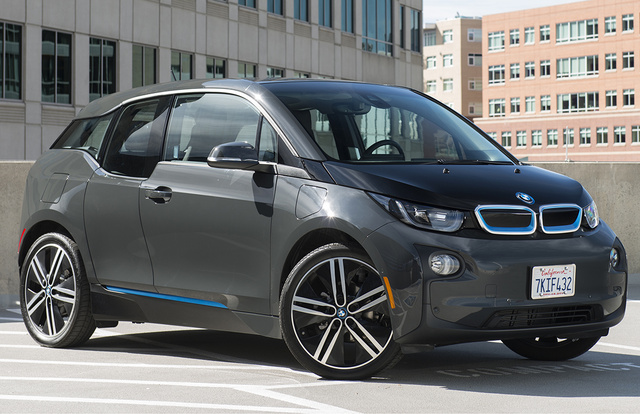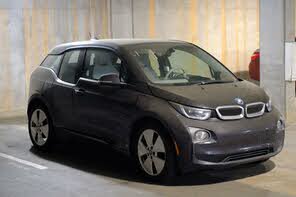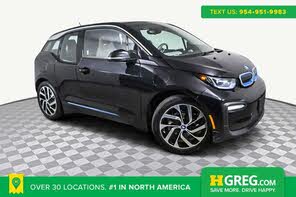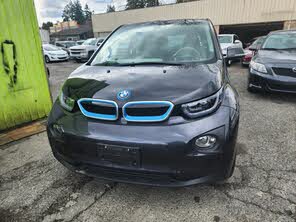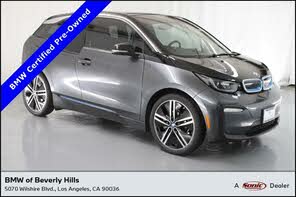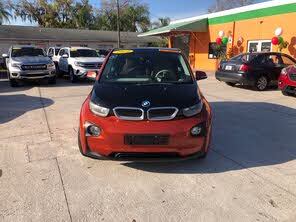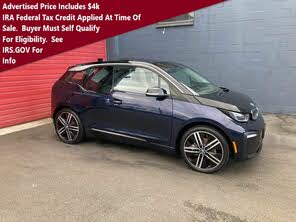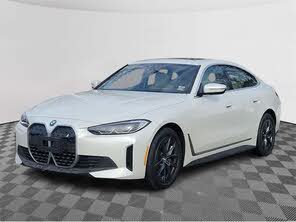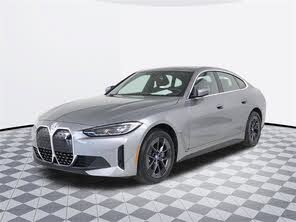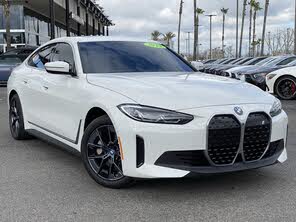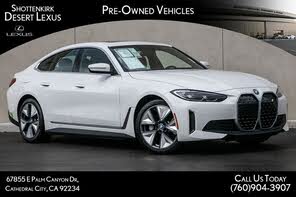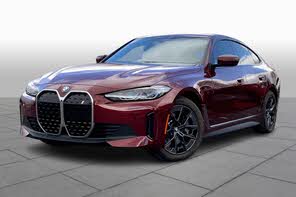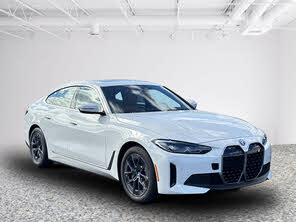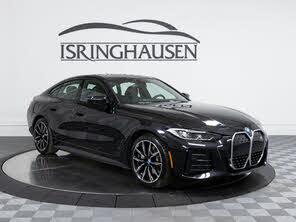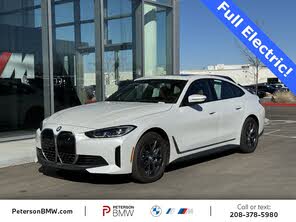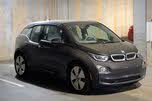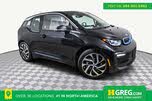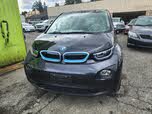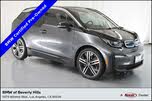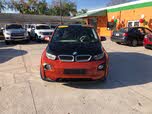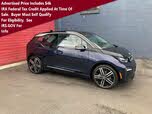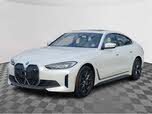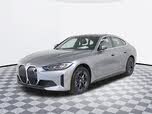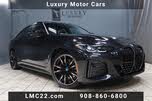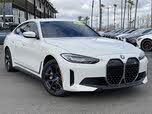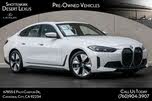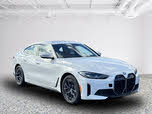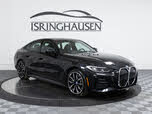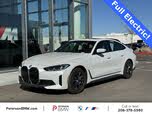BMW i3 vs BMW i4
Overview | |
MSRP$42,400 | MSRP$55,400 |
Average price$16,297 | Average price$51,486 |
Listings537 | Listings5186 |
Ratings & Reviews | |
User Reviews | User Reviews |
Expert reviews7.0 out of 10 | Expert reviews7.3 out of 10 |
Pros
| |
Reviews SummaryThe small, lumpy i3 hatchback may not look like a BMW underneath all of its badges and grilles, but it does have enough tech to make up for it. A carbon fiber and aluminum body, and lightweight materials inside, help a 22kWh battery power the i3 for 80 miles on electricity alone—when fitted with an optional "range extending" gas-powered generator, twice that. Its $42,400 entry price isn't for the squeamish, but the "gee-whiz" tech helps make up for that. | |
Reviews SummaryAfter entering the modern electric car era with the radical i3 hatchback, BMW is dialing things back a bit. The 2022 BMW i4 isn’t as radical as the i3, but it may also appeal to a wider audience. Instead of a dedicated platform, the i4 uses the same body shell as the gasoline BMW 4 Series Gran Coupe, which in turn is a four-door version of the BMW 4 Series coupe and convertible. The result is an electric vehicle with dimensions fairly close to the BMW 3 Series, the Bavarian automaker’s signature product. By offering an electric alternative, BMW is showing that it’s serious about EVs. The i4’s closest rivals are the Tesla Model 3 and Polestar, as both are electric four-doors from premium brands. Most of BMW’s traditional rivals, such as Audi and Mercedes-Benz, are focusing on electric crossover SUVs and more expensive sedans for now. The Porsche Taycan is positioned above the i4 in price and performance aspirations. As with other BMW models, the i4 launches in multiple configurations based on its drivetrain rather than conventional trim levels. The single-motor rear-wheel drive (RWD) BMW i4 eDrive40 is the base model, and the one we test drove for this review. Buyers looking for more power can upgrade to the dual-motor all-wheel drive (AWD) i4 M50, which is featured in our video review, above. | |
Popular Features & Specs | |
Engine168 hp Electric | Engine335 hp Electric |
Drive TrainRWD | Drive TrainRWD |
Seating Capacity4 | Seating Capacity5 |
EV Battery Capacity27 kWh | EV Battery Capacity81.1 kWh |
MPG City127 | MPG City109 |
MPG Highway111 | MPG Highway108 |
Battery Charge Time (240V)4 hours | Battery Charge Time (240V)10 hours |
Engine | |
Engine Name168 hp Electric | Engine Name335 hp Electric |
Battery Charge Time (240V)4 hours | Battery Charge Time (240V)10 hours |
DrivetrainRWD | DrivetrainRWD |
Fuel Economy | |
EV Battery Capacity27 kWh | EV Battery Capacity81.1 kWh |
MPG City127 | MPG City109 |
MPG Highway111 | MPG Highway108 |
Interior | |
Seating Capacity4 | Seating Capacity5 |
Key Features | |
Navigation SystemStandard | Navigation SystemStandard |
Sunroof/Moonroof | Sunroof/MoonroofStandard |
Dimensions & Capacity | |
Cargo Space11.8 cu ft | Cargo Space10.0 cu ft |
Curb Weight2634 lbs | Curb Weight4665 lbs |
Height62.1 in | Height57.0 in |
Length157.8 in | Length188.5 in |
Width70.0 in | Width81.6 in |
Wheelbase101.2 in | Wheelbase112.4 in |
Maximum Payload | Maximum Payload933 lbs |
Number of doors4 | Number of doors4 |
Overview | ||
MSRP | $42,400 | $55,400 |
Average price | $16,297 | $51,486 |
Listings | ||
Ratings & Reviews | ||
User reviews | 4.4 | 4.8 |
Expert reviews | 7.0 out of 10Read full review | 7.3 out of 10Read full review |
Pros & cons | Pros
| |
Summary | The small, lumpy i3 hatchback may not look like a BMW underneath all of its badges and grilles, but it does have enough tech to make up for it. A carbon fiber and aluminum body, and lightweight materials inside, help a 22kWh battery power the i3 for 80 miles on electricity alone—when fitted with an optional "range extending" gas-powered generator, twice that. Its $42,400 entry price isn't for the squeamish, but the "gee-whiz" tech helps make up for that. | After entering the modern electric car era with the radical i3 hatchback, BMW is dialing things back a bit. The 2022 BMW i4 isn’t as radical as the i3, but it may also appeal to a wider audience. Instead of a dedicated platform, the i4 uses the same body shell as the gasoline BMW 4 Series Gran Coupe, which in turn is a four-door version of the BMW 4 Series coupe and convertible. The result is an electric vehicle with dimensions fairly close to the BMW 3 Series, the Bavarian automaker’s signature product. By offering an electric alternative, BMW is showing that it’s serious about EVs. The i4’s closest rivals are the Tesla Model 3 and Polestar, as both are electric four-doors from premium brands. Most of BMW’s traditional rivals, such as Audi and Mercedes-Benz, are focusing on electric crossover SUVs and more expensive sedans for now. The Porsche Taycan is positioned above the i4 in price and performance aspirations. As with other BMW models, the i4 launches in multiple configurations based on its drivetrain rather than conventional trim levels. The single-motor rear-wheel drive (RWD) BMW i4 eDrive40 is the base model, and the one we test drove for this review. Buyers looking for more power can upgrade to the dual-motor all-wheel drive (AWD) i4 M50, which is featured in our video review, above. |
Video | ||
Popular Features & Specs | ||
Engine | 168 hp Electric | 335 hp Electric |
Drive Train | RWD | RWD |
Seating Capacity | 4 | 5 |
EV Battery Capacity | 27 kWh | 81.1 kWh |
MPG City | 127 | 109 |
MPG Highway | 111 | 108 |
Battery Charge Time (240V) | 4 hours | 10 hours |
Engine | ||
Engine Name | 168 hp Electric | 335 hp Electric |
Battery Charge Time (240V) | 4 hours | 10 hours |
Drivetrain | RWD | RWD |
Fuel Economy | ||
EV Battery Capacity | 27 kWh | 81.1 kWh |
MPG City | 127 | 109 |
MPG Highway | 111 | 108 |
Interior | ||
Seating Capacity | 4 | 5 |
Key Features | ||
Navigation System | Standard | Standard |
Sunroof/Moonroof | Standard | |
Dimensions & Capacity | ||
Cargo Space | 11.8 cu ft | 10.0 cu ft |
Curb Weight | 2634 lbs | 4665 lbs |
Height | 62.1 in | 57.0 in |
Length | 157.8 in | 188.5 in |
Width | 70.0 in | 81.6 in |
Wheelbase | 101.2 in | 112.4 in |
Maximum Payload | 933 lbs | |
Number of doors | 4 | 4 |

By: CarGurus + AI
This car comparison has been created with using generative AI. It is based entirely on CarGurus expert review content, ratings and data, and leverages our extensive library of hands-on product tests to create thousands of unique comparisons to help shoppers choose the right car.
